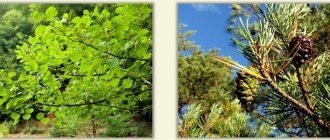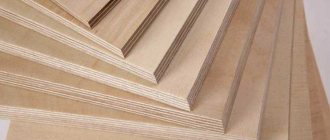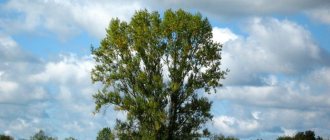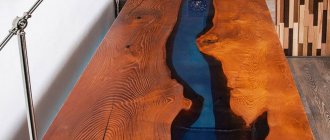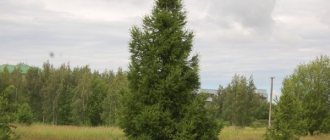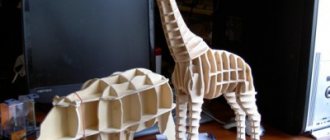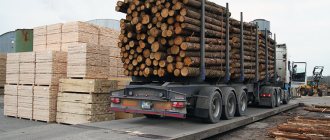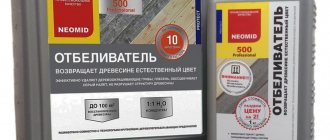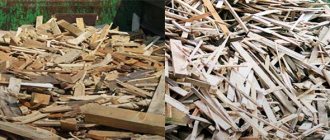What is bog oak
Bog oak is obtained through the process of long-term soaking of wood in a liquid with mineral salts, as a result of which the wood acquires new properties and original color.
This process is called mineralization, which takes place in the natural environment. The extraction of such wood is carried out in places where oak groves grew thousands of years ago - often these are swamps. Changes in river beds carried them under water, where the trunks and branches remained intact and acquired incredible strength. Under the influence of chemicals, the shade of the wood changed - it became darker and more saturated. And the outer layer usually consists of black plates of coal, although the oak was not in fire, but, on the contrary, under water for many centuries.
Bog oak first appeared quite by accident. People have discovered oak wood that has spent hundreds of years underwater. All such specimens fell into the sea before the advent of the industrial era, and are therefore environmentally friendly. You can even determine the age of wood simply visually. Over 300 years under water, bog oak becomes silver, and the presence of fawn shades is also noted.
Production of furniture from stained wood
The following are best suited for such purposes:
- oak;
- larch;
- birch.
When describing furniture made of bog oak, a simple name is appropriate - “exclusive material”. The tone and texture of natural wood is unique. The depth of color varies: from light gray to black-blue tones, from pale pink to amber shades.
Interesting! Craftsmen compare the pattern of bog oak slices with a map of the starry sky - the same unimaginably beautiful picture.
Unmistakably, such furniture is an unobtrusive but pronounced sign of the taste and specific level of well-being of the owner of the house.
Unique characteristics
The oak lives its first life on the shore, the second in the water. The priceless wood is environmentally friendly - it got into the water in the pre-industrial period. After spending at least 300 years under water, bog oak acquires silver and fawn shades. And after 1000 years, the wood becomes almost black, although there are specimens with a purple tint, which allows the products to look even more original. This occurs due to the lack of oxygen supply due to the layer of sand and silt under which the tree rests, and high pressure. At this time, special chemical reactions take place and a natural preservative, tannin, is produced. Oak acquires amazing properties - it becomes hard, almost like stone and resistant to rotting and drying out, and no varnishes or paints are used in the manufacture of products - its texture and color are perfect.
Properties of stain
Artificial materials make it possible to create a product such as stained wood. Almost anyone can do impregnation with their own hands. Before this, it is necessary to study the properties of tinting and the technology of its application.
Special chemical compounds are applied to the prepared surface. They are absorbed by the wood, which allows it to preserve its unique structure. First of all, the impregnations presented are designed to enhance natural wood.
Using one or several shades you can create a beautiful interior decoration. This turns parquet and furniture facades into a real work of art. Some types of stains extend the life of the material, protecting it from insects and fungus. Such chemicals prevent the formation of wood rotting processes. Therefore, their use is beneficial in all respects.
Features of the reaction
Changes in the physical and mechanical characteristics of wood associated with the passage of complex chemical reactions: leaching of water-soluble substances contained in the cell walls. The process has been proven by the results of numerous studies conducted by N. T. Kuznetsov back in the 30s of the last century.
As a result, it was possible to establish that stained wood contains 75% less water-soluble substances than natural wood. This indicates an increase in cell porosity and a decrease in their density, which results in an increase in the moisture content of the saturation limit, balancing shrinkage, and maximum humidity. It is this factor that explains the absolute shrinkage of boards or workpieces during drying of the sawing material.
The analysis data contributed to the development of thought and the formation of a new technology for drying wood and blanks made from it with a thickness of up to 22-32 mm in a convective or convective-microwave oven, or a vacuum-dielectric drying unit.
The use of advanced technologies has resolved the issue of temperature treatment of wood. There is virtually no internal or external cracking. Collapse in such cases is unacceptable.
The interesting concepts put forward by researchers and scientists do not end there. The study of the properties of stained wood is at the stage of processing geoanalysis data and continues its evolution in the world.
Features of oak extraction and processing
The process is complex and labor-intensive, and not every specialist can handle wood processing. Despite this, the products deserve the highest praise due to their qualities.
Important! If you plan to process or decorate the surface with stained wood, then try to prepare the material in advance. It takes more than one year to process wood.
To obtain such valuable material, water areas of significant volumes are examined, especially the bottom of reservoirs. Moreover, the work is carried out in very difficult conditions.
Slough is a delicate matter
Alexander Dupanov, director of the Trans-Center (Gomel, Belarus), which has been extracting and processing natural bog oak on an industrial scale since 1998, witnessed a real boom in the extraction of bog wood. According to him, in the 90s of the twentieth century, many entrepreneurs tried to organize a business in this area, but they wanted to do it quickly, without significant investments, without attracting highly professional specialists. As a result, thousands of cubic meters of valuable material were ineptly destroyed.
On the Internet you can still find many offers for the sale of bog wood, but, according to Alexander Alexandrovich, the vast majority of these are one-time offers and, as a rule, entrepreneurs do not guarantee the shipment of material in the declared volume, much less the declared quality.
“In the post-Soviet space there are only a few enterprises capable of providing the entire cycle - from the extraction of fuelwood and its processing to the output of finished high-quality material. A number of companies simply do not have proven technologies,” says Mr. Dupanov. “In addition, when organizing production, they do not take into account that the funds received from the sale of dry bog wood do not cover the long-term costs of producing high-quality material. For example, to obtain 100 m3 of high-quality dry bog oak, it is necessary to find, extract and process at least 1000 m3 of driftwood.
Extraction and processing of bog wood is a complex and lengthy process. First, you need to conduct reconnaissance and draw up maps of the location of the flooded wood. To do this, specialists have to explore 300-400 km of the river, then scuba divers get down to business - descending to a depth of 30 m to discover the exact location of the flooded forest. Sunken trunks need to be lifted ashore (and in such a way as not to damage them), carefully transported, sorted and processed. Experts say that stained wood is a very capricious material; it can lose its properties after lying in the open air for several hours.
According to Vladimir Pushkarev, the head of the company, which is engaged in the extraction and processing of drift wood, in order to engage in bog wood at an industrial level, you need to invest several million dollars in the business. “The extraction of marine raw materials is fraught with risk. It is necessary to create a team of like-minded people. And those who hope to get rich quickly in this business will be disappointed, he says. -Our company is engaged in the extraction of driftwood not for the sake of making huge profits and enrichment, but because we like this business. You have to be a fan to do this.”
Staining wood with your own hands. The process of treating wood with stain
- The stain is applied along the fibers, in even stripes and in a generous layer.
- If applied to a vertical surface, it is better to apply from bottom to top. This way you will avoid unwanted drips.
- On average, stain is applied in two layers. The first layer must dry completely. Only after this can the second layer be applied.
- After applying the second (last) layer of stain, excess composition that has not been absorbed into the wood should be removed by “driving” it off the surface with a brush.
- After the stain has completely dried, the surface is varnished. Allow to dry completely. Next, the surface is sanded and a second, finishing layer of varnish is applied. After the finishing coat has dried, the surface is polished.
That's all the secrets)
How is a tree brought to the surface?
Having discovered the trunk, the bog oak is lifted ashore. In this case, it is impossible to do without the use of technology, since one tree weighs around 10-20 tons. Before starting to saw the material, the wood pulled out of the water is assessed at the first stage for quality. Sometimes a tree that has been taken out of the water and prepared for processing is completely unsuitable for further work. As soon as the material is cut, the production of parquet, furniture, doors or window frames immediately begins. Untreated stained wood, kept under water for many years, quickly becomes unusable on the surface. Therefore it must be processed immediately. As you have most likely noticed, extracting bog oak is a labor-intensive process.
READ Unusual Facts About the Weeping Willow
An effective way to extract driftwood for small rivers
A mechanical engineer from Barnaul, Vladimir Nevsky, devoted more than one year to searching for an economically viable method for extracting, transporting and transshipping sunken wood on small rivers (moth rafting was often carried out precisely on small, non-navigable rivers). And I found it! Vladimir Aleksandrovich developed the design of a small-sized floating crane - a mobile and compact unit that can go where other equipment cannot. Mr. Nevsky's invention was repeatedly tested on small rivers of the Altai Territory.
“Both small and navigable rivers are clogged with fuel, where high-performance floating cranes can be used for extraction. However, the costs of searching for logs scattered throughout the underwater river expanses, their extraction, transportation and transshipment will be incommensurate with the final result. But on small rivers it’s easier. Floating logs lie in the reaches of the pits, near the rifts of narrow rivers, and it won’t be difficult for a professional riverman to find them,” says Mr. Nevsky.
The idea of developing underwater deposits fascinated Vladimir Nevsky back in 1992. Then he managed to gather a group of enthusiasts who, armed with archival information about timber rafting, set off on a voyage along the rivers of the Altai Territory. They determined the volume of sunken wood, compiled pilot maps, and marked roads and settlements on diagrams and maps. But when they began to calculate how much money needed to be spent to raise the forest from the water, they realized that the attractive idea resulted in a difficult economic problem.
According to Vladimir Nevsky, such common methods of extracting sunken moth wood from small rivers, such as diving and trawling from the shore, are, firstly, ineffective, secondly, labor-intensive, thirdly, not always possible in inaccessible coastal areas and, fourthly, they are economically unjustified. And the use of high-performance floating cranes, according to the expert, on small rivers is impossible due to the lack of fairway dimensions that allow the use of such equipment.
“The domestic industry produces fuel lifting units LS 65 and LS 41. But the cost of these units exceeds several million rubles. In addition, due to their large dimensions, they cannot be used on small rivers. But the work of a floating crane with minimal dimensions is possible where a sparrow is knee-deep: on reservoirs with a fairway width of 4.5 m and a depth of 30 cm.”
According to Nevsky’s calculations, with the help of such a floating crane, 700-900 m3 of driftwood can be extracted per month. The performance of a floating crane depends on the depth of the reservoir and the degree of siltation of the logs. Diesel fuel consumption for lifting fuel, transportation at a distance of up to 50 km and transshipment to vehicles is 1500 kg/month. The average cost of 1 m3 of raw materials is 550-600 rubles. (including lifting, transportation, transshipment and loading onto a timber truck), and the average price of round timber today is about 3 thousand rubles. “So judge for yourself whether it is profitable to engage in this business or not,” says Vladimir Alexandrovich.
Main processing steps
We will tell you in more detail how oak is dried in various ways. The technology is followed step by step and skipping one of the stages is unacceptable. Otherwise, the wood will crack and become brittle.
Vacuum drying of oak is carried out in special chambers, where excess moisture is drawn out of the wood under the influence of low atmospheric pressure. It takes place in several stages:
- Bog oak is soaked in an antiseptic solution for 2–3 hours. Sanezh will do.
- The product is placed in a drying chamber, where it is kept at a temperature of 25 degrees and a humidity of 50% for 5 to 10 days. Temperature and humidity must be constant.
- The oak is placed in a sealed chamber, where, under the influence of a vacuum, it is treated a second time with an antiseptic solution.
- Dries at a temperature of 35 degrees and humidity not higher than 25% for 10 days.
The method has advantages:
- Oak wood dries to a predetermined temperature.
- Only 2-7% color change.
- Fully ready within 4-5 weeks.
The disadvantages include high energy costs and the complexity of the process. If you do not monitor humidity or temperature, the wood will crack and become unusable.
The pulse method of drying bog oak is rarely used in Russia due to high costs. But it is considered effective and the material dries evenly.
Performed in the following steps:
- Conductors are connected to the wooden blank on both sides.
- The second ends of the conductors are connected to a special electrical appliance that will supply current.
- Under the influence of electrical impulses, the workpiece gradually dries to the required humidity.
If you have the skills and knowledge, then you can assemble such a device with your own hands and use it for work.
The adsorption method resembles the old one and is available to everyone at home. To dry, a small piece of oak is placed in a material that absorbs moisture as much as possible. Craftsmen use special mineral granules. But newsprint will do.
Drying is performed in the following steps:
- Small pieces are soaked in a container with an antiseptic solution for 3–4 hours. But you should not use solutions with bleaching effects, otherwise the black color of the valuable breed will disappear.
- The workpiece is wrapped in several layers of paper and placed in a well-ventilated and dry place.
- Every day the product is unrolled and folded into new sheets of newspaper.
Drying is carried out for 1–2 months. The wood will not crack and will retain its noble shade.
Infrared light heats the wood evenly and drys it gently. The workpiece does not heat up and no internal deformation is observed. The method is available in enterprises and at home. It is enough to purchase several infrared heating elements and place them on a frame made of timber or metal.
Drying is carried out in the following stages:
- The workpiece is soaked in an antiseptic solution for 3–4 hours.
- Place on a flat surface under infrared heaters.
- Once an hour, the workpieces should be turned over so that the heat is distributed evenly.
Humidity is checked using a hand-held moisture meter. When the product dries, it is allowed to rest for 3–4 days in a dark and cool place with a humidity of 15–25%. Then use it for its intended purpose.
The advantages of drying under infrared plates include:
- The wood does not deform or crack.
- Does not lose its black color.
- Drying occurs evenly over the entire depth and length.
- Electricity costs are minimal.
The method has no disadvantages, but due to its novelty it is little trusted. The video below details one of the available methods for drying hardwood:
How to properly dry bog oak is the secret of woodcarving masters. It was passed from father to son and carefully preserved. But with the advent of new technologies, it is not difficult to dry stained wood at home. The main thing is to follow technology and adhere to our instructions.
Features of processing valuable rocks
Bog oak is mined on the banks of rivers. Wood can lie in water for more than a hundred years, and then it is taken out and processed. Products made from stained material have a pleasant dark color and are durable. In terms of density, moraine material is compared to iron, so even sawing it is difficult. The humidity of the freshly mined product can reach 117%. Compared to natural humidity of 50–65%, this figure is impressive.
The material is extracted in three ways:
- For bottom-depth work, it is the most costly and painstaking.
- When developing peat bogs, it is less labor-intensive.
- Manufacturing in specialized workshops is the simplest, but multi-stage method.
The weight of wet oak wood is 1500 kg/1 cubic meter. Therefore, immediately after extraction from the water, the material is cleared of silt and sand and cut into small pieces. Otherwise, transportation becomes more difficult.
The tree is afraid of sharp contacts with hot air and direct sunlight, so drying is carried out in a gentle mode. A proven old-fashioned way of drying bog oak is to place small blocks of wood in the grain in the fall and leave until spring. Natural drying is also allowed, but it must be carried out in a room with good ventilation and constant humidity and temperature. It became possible to dry the material in a short time only in the last 10 years, with the advent of new technical means.
The following methods are used to dry bog oak in a short time:
- Vacuum chamber.
- Pulse.
- Adsorption.
- Infrared.
But when dried in chambers, moraine material discolors and becomes less dark. Therefore, many criticize unnatural drying methods. But as it dries naturally, the areas exposed to the sun also become lighter. Chamber drying of bog oak saves time, and if it is carried out in compliance with the technology, then cracks will not appear and the product will not be subject to internal stress.
When chamber drying to different humidity levels, minor changes in geometric shapes are allowed. But if you pre-treat the product with a chemical composition, the changes will decrease. Details are shown in the table below:
| Humidity indicator | Changes in geometric shapes, % | |
| Chemically treated wood | Unprocessed | |
| 50% | 3,5 | 7,2 |
| 25% | 4,8 | 10,7 |
| 15% | 6,3 | 12,6 |
An antiseptic penetrating solution is used as a chemical treatment. The product is soaked in it for 2–3 hours. Drying is also affected by the temperature in the chamber and air humidity. The maximum permissible temperature is 50 degrees - maximum shrinkage. Smaller changes are permissible at a temperature of 25 degrees.
Application area
Previously, it was often used for interior decoration of palaces and castles.
Nowadays, this type of oak is used for the manufacture of furniture and interior decoration elements (parquet, wall slabs, mosaics).
Souvenirs and jewelry made from this raw material are also exclusive and very interesting. However, finding them is quite difficult, because the manufacture of such products is carried out by a narrow circle of specialists.
Where is bog oak mined?
Valuable bog oak is mined only in three countries: Russia, Ukraine and Belarus. Scuba divers look for wood in large bodies of water. It is located at the very bottom. Each trunk is searched manually. The location of valuable wood can only be approximate, so it takes time and resources to find it.
READ What kind of tree is larch?
Oak trunks are pulled ashore using specialized equipment. The tree is heavy and can reach up to 50 tons. After raising the trunk, it is assessed and bucked. It is important to do everything efficiently and create the necessary conditions for storage, since the material can easily deteriorate.
Should I buy or make stained wood?
In the modern world, a cheaper option is very popular. This is an artificially stained tree. The material is treated with special compounds, emphasizing the beauty of the texture.
The sale of stained wood, which has been artificially processed, is carried out everywhere. This material is widely used in the furniture industry, when finishing floors, walls or ceilings. Various building structures and parts are made from this wood.
The cost of artificial material is much less. But it should be remembered that unscrupulous sellers can use stain to sell cheap types of wood under the guise of expensive varieties. It is sometimes quite difficult to determine what type of material is presented to the consumer without an examination. Therefore, if you want to use artificially stained wood, it is better to carry out the processing yourself.
Artificial staining of oak
There are many instructions on how to make bog oak at home. For this it is suggested to use ammonia. However, ordinary oak and bog oak from the bottom of a reservoir have different properties and qualities. If you stain a finished product, there is a possibility that the wood will become deformed. Therefore, you should carefully read the instructions or contact a real specialist.
Manufacturers who use artificial staining usually guarantee high strength of the product and a unique color. And the cost is not inferior to natural bog oak. However, real material is superior in quality to any imitation, even if it is made perfectly. You can only create the appearance of a magnificent wood texture, but not its quality characteristics. However, due to such imitation, it is quite difficult to distinguish the original material.
Wax, acrylic stains
In the modern world, stained wood is processed to the highest standards and requirements. The most environmentally friendly and fireproof substances for tinting materials are wax and acrylic stains. They do not emit an unpleasant odor and are easily applied to the base. They are used in a variety of industries.
Acrylic impregnations can be mixed to obtain more subtle tinting colors. This quality is widely used to create parquet or furniture. Even applying the product in 2 layers, you will be able to create a monotonous shade without spots or lines.
Wax stains are applied to the base using a soft cloth. The product is rubbed over the surface. When using this type of tinting, it should be remembered that it is incompatible with acid-curing varnish or polyurethane coatings. Wax stains look very good after polishing. Therefore, they are actively used in the woodworking industry.
Stained wood - incredible beauty and strength
Tree trunks and fragments lying under water are usually called driftwood. A logical name, considering that the tree actually ends up drowned and has been at the bottom of the sea, lake, river, or swamp for decades. It is noteworthy that some trunks turn into dust, rot and, of course, cannot be used. But other trees, on the contrary, acquire truly stone strength.
The most valuable stained wood is oak. This royal tree is already valued for its strength and beautiful texture. After lying under water for at least 300 years, oak acquires delicate fawn shades. If the tree is black, then it has lain in the reservoir for about 1000 years!
In the pre-industrial era, “black gold” was not called oil at all, but bog oak. Products made from it are practically eternal and are not subject to rotting, mildew or mildew. They do not need a protective coating, and stained wood also looks incredibly beautiful.
Besides oak, larch is considered the most valuable stained wood. No wonder. It is these tree species that, due to their high density, sink and sink to the bottom, where a transformation process occurs under a layer of silt or sand. Even in fresh water there are salts that interact with the tannins of wood and help it acquire special hardness and strength.
According to experts, for a tree to really become stained, it must lie under water for at least 40 years. In general, the longer the better, experts say. Ideal places to obtain stained wood are standing waters of swamps or lakes. But a tree that has lain in sea water, soaked in salt, will also be no less durable.
You can make literally anything from stained wood: furniture, parquet, various crafts, figurines and figurines, boxes, billiard cues, pipes, other interior items and even jewelry. This material has no disadvantages, but it is not accessible to everyone. Stained wood, especially oak and larch, is very expensive! There are several good reasons for this:
- Firstly, this is a rare material. Although, as calculated by the Central Research Institute of Lesoslava, during the transportation of tree trunks, approximately 1% of the total floated volume drowns, and about 9 million m3 of driftwood has accumulated in the Volga basin. That's a lot, you say. But finding sunken trunks is not easy. In addition, only 50% of all sunken wood can be classified as commercial, that is, suitable for further use. And there is no more than 5% oak among the driftwood. In Europe, the search for and lifting of flooded trees has been carried out for a long time and purposefully, so it is already very difficult to find driftwood in European countries. Russia still has reserves of this material;
- Secondly, lifting a tree to the surface is technically difficult. Special equipment is needed, usually requiring the help of scuba divers. The wood becomes heavy; you cannot get a whole trunk by hand;
- Thirdly, it’s not enough to get some driftwood. It also needs to be dried before use. This takes about a year, and in no case should you speed up the process; drying should occur naturally;
- Fourthly, it is difficult to process wood that has become very durable; special skills and tools are needed. Not all carpenters undertake to work with bog oak.
Therefore, for three kilograms of bog black oak on the Internet they often ask about 2 thousand rubles! Or 200 rubles for one small piece, literally a cube, suitable only for cutting out, for example, a knife handle. And a finished bog oak comb, such as shown in the photo above, will cost more than 12 thousand rubles.
You can imagine how much a parquet made of such material or a kitchen set will cost. Experts compare the cost of a good stained oak log with the price of a car. Cheaper are stained birch, pine, and aspen - they charge from 1.5 to 20 thousand rubles per cubic meter, depending on the condition and quality of the wood.
With such prices for stained wood, it is not surprising that manufacturers of furniture and interior items achieve similarity with the help of stains and special impregnations. Yes, this is already an imitation; in terms of strength and hardness, such wood is no different from ordinary wood, but the color becomes darker, more noble, and the structure is emphasized.
Stained wood is an elite material. Only for expensive interiors, decoration of yachts, interiors of exclusive cars, furniture that stands in the offices of presidents and executives of large companies. published
If you have any questions on this topic, ask them to the experts and readers of our project.
Stains or stains are tinting compounds that are used to finish wood to give it a more expressive shade. Absorbing into the wood structure, the liquid paints the surface layer, preserving the natural texture and surface relief.
Treatment with stain allows you to easily and without extra costs give inexpressive types of wood a more noble appearance. The ability to experiment with shades opens up wide possibilities when finishing projects.
The composition of the stains does not in any way affect the basic characteristics of the material. A film does not form on the surface, rot resistance, hardness and strength of the wood remain unchanged (in the absence of special components). Techniques for applying paint are quite easy to master.
The basis for stains can be water, alcohol, oil and other substances. Each type of finishing composition has its own characteristics, knowing which it is easy to choose the optimal type of finishing for a particular project.
Defects and their elimination
Do-it-yourself parquet restoration - instructions
Staining wooden furniture must be done extremely carefully, otherwise there is a high risk of defects forming that are quite difficult to eliminate. But if you know how to get rid of them correctly, then there shouldn’t be any problems.
The main defect is the formation of streaks. They arise as a result of applying a large amount of the mixture and its subsequent rapid drying. In this case, it is necessary to remove the layer of impregnation applied to the wood, then apply a new layer on it, which will soften it, and then remove excess impregnation with a rag.
After the wood stain has completely dried, it can be removed using paint solvents. Before this, the top layer is removed with sandpaper or a plane, since the solvent is not able to remove all the pigment.
The most difficult defect is spotting of the product. To remove it, the painted area is treated with a plane (this defect is not washed off with a solvent). In plywood, all face veneer must be removed. To avoid staining, it is better to use a gel stain or first apply a test layer on an unwanted piece of wood to see how the coating behaves on the desired surface. It is worth remembering that the impregnation must be stored in a place away from children.
Today there is such a variety of wood impregnating agents on sale that even a specialized specialist cannot clearly answer the question of what their fundamental difference is. If you read the instructions for the preparations, the conclusion suggests itself that most of them protect wood literally “from everything.” So why do you need wood stain? Is it only for toning it, as is commonly believed?
An analysis of all the properties of the preparations available on the market in this category for wood processing, and reviews on thematic sites allows us to determine exactly what can be achieved with their help. Depending on the composition and specific application, wood stains can solve the following problems:
- Wood tinting while maintaining its texture.
- Reliable protection of the material when other means are ineffective or their use is not economically feasible. Reasoning - stains are characterized by a greater depth of penetration, while being cheaper than paints, varnishes and a number of other preparations used for wood processing (at least 2.5 times).
- Imitation of another, more expensive breed.
- Wood bleaching. This is often done either during its restoration, or in preparation for painting (applying colored varnish).
- Protecting the material from rotting (antiseptic function) and destruction by wood-boring insects.
- Combining shades, creating the effect of surface finishing with different woods.
- Some stains strengthen its structure.
- Giving (partial) moisture-repellent properties to lumber.
- Any stain, regardless of composition, definitely increases the shelf life of wood.
But is it really that simple? Is it enough to buy any of the commercially available stains, and all problems with reliable wood processing are solved? A comprehensive answer can be obtained by familiarizing yourself with all the types of liquids in this group. By the way, stains are often called differently - stains - and they are used not only to protect and prepare for further use of natural wood, but also building materials based on it (plywood, MDF, fiberboard, OSB, chipboard).
What is the effect of ammonia staining?
Ammonia fumes affect the tannins in the wood, causing the material to change color to a darker one.
Advantages : Ammonia staining does not change the structure of the wood, but only darkens the main tone, leaving all the veins and grains visible. This is important when staining exotic woods or materials that have interesting textures, such as ash.
Disadvantages : Difficult to control the darkening process with ammonia haze. Different batches of wood or different parts of the same furniture can differ greatly from each other, despite using the same process and accurately selecting the percentage of ammonia.
The longer you treat oak wood with ammonia, the darker it becomes
In industrial production, it is not household ammonia that is used, but ammonium hydroxide (concentration from 26 to 30%). Such staining is carried out only in sealed chambers, and the masters in charge
The selected method is suitable for wood with a high content of tannins (tannins). The most popular wood species for using ammonia haze: oak, chestnut, ash. When treated with ammonium hydroxide vapor, this wood acquires a rich, luxurious color in shades from light coffee to black (depending on the exposure time).
The beautiful structure of apricot wood is better revealed after staining with ammonia and oil treatment, as in the third photoMaple, hornbeam, birch, lilac, ash, hazel, and elm will not respond to treatment with ammonia vapors, or after prolonged exposure they will acquire an unattractive, dirty tint and become stained.
Designers and technologists are still trying to use ammonia haze for wood with a low tannin content. Through experiments, it turned out that if you saturate the surface of the workpiece with strong tea, let it dry, and then place it in a stain chamber or tank, the wood will still darken, but will not have such rich shades as oak or chestnut.
process, are required to wear gas masks, long gloves, and eye protection.
Staining process
Before staining, prepare a tightly sealed tank or staining chamber, depending on the size of the item you are going to paint.
You can make a staining chamber yourself. Assemble a frame from any wooden or plastic guides, wrap it with film. The main rule: the chamber is made as small as possible so that the concentration of ammonia vapor is maximum.
A wide bowl is placed at the bottom of the tank, and the wood to be painted is placed above it. Make sure that the edges of the parts do not come into contact with each other or with the walls of the tank; do not use metal supports. If you plan to use the wood not completely, then it can be leaned against the wall above the bowl, so the main part will be completely open to ammonia vapor, and the points of contact will then be cut off.
READ Unusual properties of aspen
Next, ammonium hydroxide is quickly poured into the bowl, and the container is tightly closed. The staining time with ammonia haze can range from 2 hours to a day. This period depends on the color you want to get. Once the process is complete, open the lid. Ready! You've got a classic stained wood.
Sometimes, due to humidity or a weak ammonia solution, the surface of the wood after staining is slightly deformed, and the top layer is partially lifted. In this case, you can simply sand the painted layer; do not be afraid to spoil the shade; with standard ammonia staining, the color changes over the entire surface of the product to a depth of 3–4 mm.
When staining, vapors penetrate deeply into the wood, so this method is also used for decorative beams or bars that will be sawed
Ammonia hydroxide is used in the household and sold without a prescription, but when using it you need to follow a few simple rules:
- Wear rubber gloves, safety glasses and a respirator. Do not expect that you will have time to quickly move away from the dishes in which the staining will take place without inhaling the fumes.
- Work only in a room with good ventilation or fully open windows; if it is possible to carry out the staining process outside, use it. You need to think through the weathering system before starting treatment, since the room will be filled with vapor in a few seconds.
- Use glass or plastic containers; ammonia can dissolve metal, especially aluminum.
- After finishing the staining process, the composition must be disposed of. The best way is to pour the used ammonia into a bucket of water and pour the resulting solution into a compost heap or onto beds under the roots of plants. You will receive free fertilizer.
Methods of applying stain
Stained wood is obtained by using one of the 4 techniques below. The product can be applied by rubbing, spraying, or using a roller or brush.
The first method is suitable for porous wood. The product is rubbed over the surface. In this case, a slow-drying stain is used. Spraying is done using a spray gun. The product is evenly distributed over the base.
Applying tinting with a brush is not applicable to all types of wood. This results in a more saturated color. For small parts, apply stain with a roller. This approach allows for uniform color. But this method is still best used for small surfaces. The application method must be chosen in accordance with the type of product.
In what cases are alcohol stains appropriate?
Alcohol stains are a category of finishing compounds based on aniline dyes diluted in alcohol. Like water stains, this product is available in powder and liquid form. A distinctive feature of the finish is the accelerated penetration of coloring pigments into the wood structure and rapid drying.
The optimal method for applying alcohol stain is to use a spray gun. Using a brush, roller and tampons when working with such compositions is ineffective due to rapid drying. The use of manual methods often results in streaks, uneven tone, spots and other defects.
Such compositions are optimal for finishing large surfaces. Similar in characteristics to them are nitro stains - solvent-based stains.
Alcohol-based stain dries in 20-30 minutes.
Oil stain
Another popular type of chemical impregnation is oil stain. It has a number of advantages. Dyes are dissolved in drying oil or oil. This type of impregnation offers a wide range of shades.
Furniture made from stained wood treated with similar means turns out to be very beautiful and durable. Fibers are not damaged during impregnation, and the product spreads quite evenly even over large areas.
This type of stain is less demanding on the application method. Even a person with minimal experience in carrying out the type of work presented can use it. After processing, the products are quite simply repainted and restored. When working as a solvent, you can use widely available white spirit.
Bog oak in the interior
This wood, despite its rarity, is used quite often in a variety of fields. The rarity and value of the material requires fine manual processing.
The most popular area of application is interior.
This wood is used to make:
- pieces of furniture;
- souvenirs;
- floor finishing materials;
- wall coverings;
- stairs;
- window;
- doors.
Interior items made from this type of wood are characterized by a long service life, and decorative elements are doomed to turn into antique objects.
Manufacturing of products from stained wood
Products made from natural wood that have undergone centuries-old natural processing are widely available on the market. From bog wood they produce:
- stairs of any shape;
- windows “stained oak” (shade);
- window sills;
- furniture panels;
- flooring;
- Wall panels;
- tinted doors “stained oak”;
- siding and other materials for exterior construction and home improvement.
Stained wood is an interesting solution for creating a room in a Scandinavian style.
It's nice to look at the interior when there is something unusual in it. Stained wood is the element that fully meets the needs of the designer, creating new and new things to improve human comfort.
